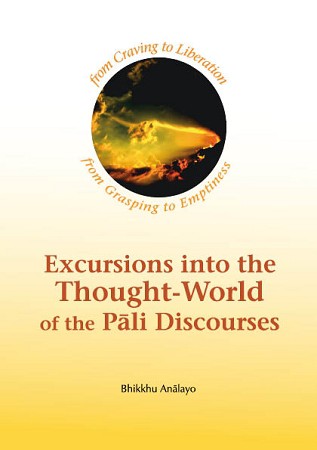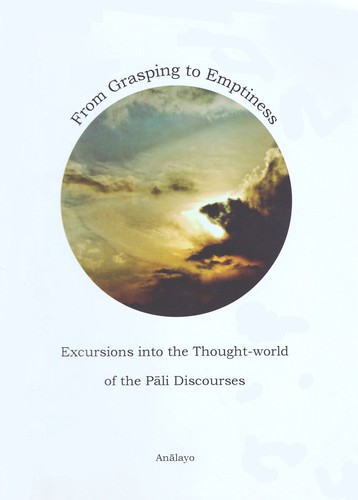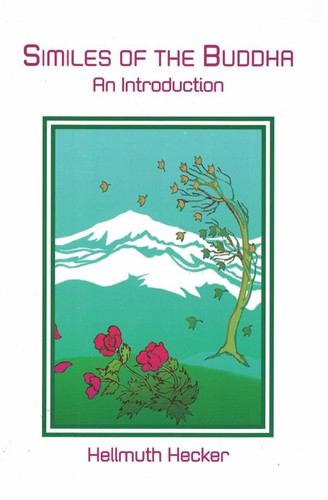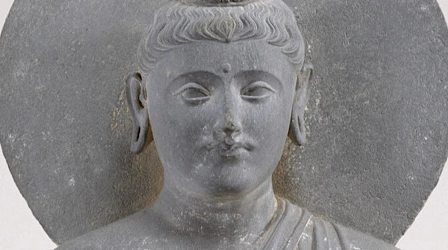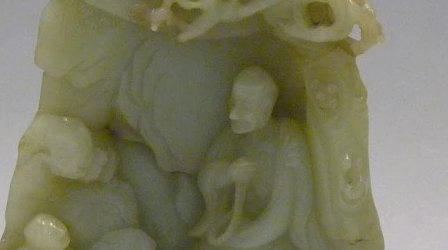Imagery in the EBTs
Also available: As a Syllabus
Subscribe to this topic via: RSS
The similes, metaphors and diction of the early canon.
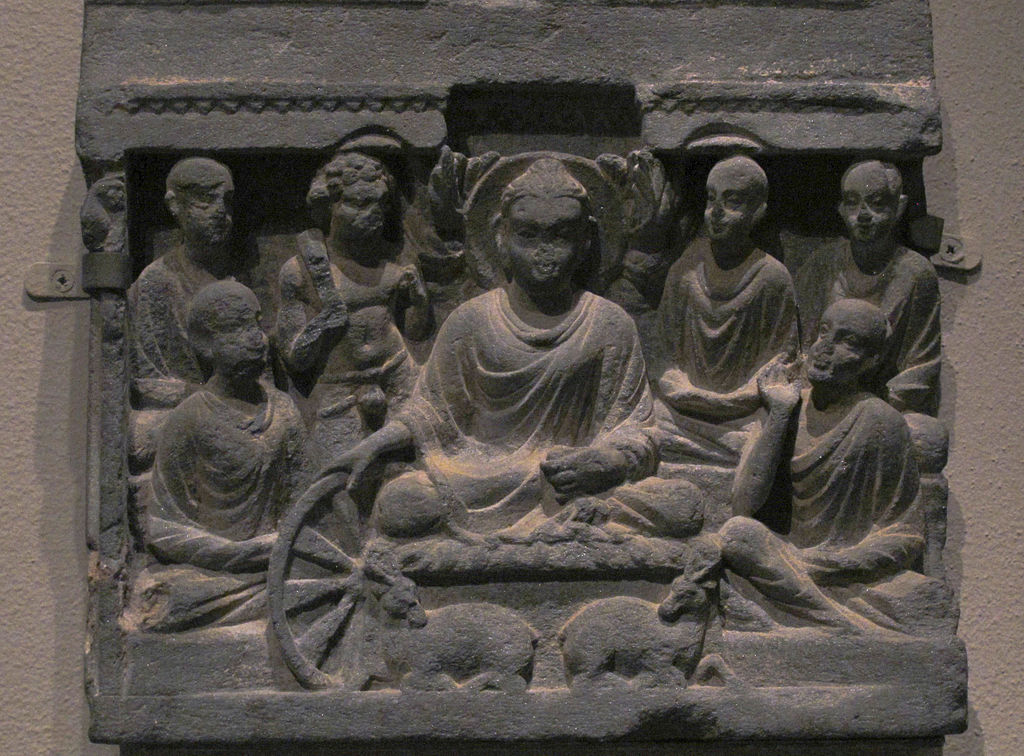
An ancient stela depicting the first sermon shows the Buddha holding a wheel. The discourse itself compared the teaching to a great "wheel of truth" showing that metaphors and imagery have been part of the Dhamma since the very beginning. (Ismoon, CC BY-SA 4.0)
Table of Contents
- Books (8)
- Canonical Works (151)
- Readings (20)
- Audio/Video (3)
- Reference Shelf (1)
- Related Topics (2)
Books (8)
Featured:
See also:
Canonical Works (151)
Featured:
-
No life is eternal, not even that of the gods;
what then of sensual pleasures so hollow…10 pages -
⭐ Recommended
Whoso has boys, has sorrow of his boys,
Whoso has kine, by kine come his annoys.
Man’s assets, these of all his woes are chief.
Who has no more, no more has grief.4 pages -
⭐ Recommended
A group of monks tries to figure out the meaning of a difficult poem uttered by the Buddha. After offering several interpretations, the Buddha gives his answer.
3 pages -
⭐ Recommended
… what is confinement, and what is the opening amid confinement that the Buddha spoke of?
3 pages -
⭐ Recommended
Fed and fuelled by that, the great tree would stand for a long time.
-
⭐ Recommended
Just as two sheaves of reeds might stand leaning against each other, so too, with name-and-form as condition, consciousness comes to be; with consciousness as condition, name-and-form comes to be.
3 pages -
⭐ Recommended
Now suppose that in the autumn—when it’s raining in fat, heavy drops—a water bubble were to appear & disappear on the water, and a man with sight were to see it. To him it would appear empty, void, without substance: for what substance could there be in a bubble? In the same way, a man with wisdom sees a feeling. To him it would appear empty, void, without substance: for what substance could there be in a feeling?
3 pages -
⭐ Recommended
Suppose a trustworthy and reliable man were to come from the east. He’d approach you and say: ‘Please sir, you should know this. I come from the east. There I saw a huge mountain that reached the clouds. And it was coming this way, crushing all creatures.’
-
⭐ Recommended
Suppose a person was to catch six animals, with diverse territories and feeding grounds, and tie them up with a strong rope.
3 pages -
⭐ Recommended
This famous simile compares physical pain and mental anguish to two arrows: the second of which is optional.
3 pages -
Upāli, it’s not easy to endure isolated wilderness & forest lodgings. It’s not easy to maintain seclusion, not easy to enjoy being alone. The forests, as it were, plunder the mind of a monk who has not gained concentration.
6 pages -
The famous simile of the blind men and the elephant.
-
… suppose an oil-lamp is burning: its oil is impermanent and subject to change
5 pages -
Kāmabhū asks Citta the Householder to explain an enigmatic, symbolic poem spoken by the Buddha.
5 pages -
⭐ Recommended
A mendicant is like a king’s star archer if they are a long-distance shooter, a marksman, and one who shatters large objects.
-
⭐ Recommended
… life as a human is short, brief, and fleeting, full of suffering and distress. Be thoughtful and wake up! Do what’s good and lead the spiritual life, for no-one born can escape death.
-
⭐ Recommended
Monks! All is aflame!
2 pages -
⭐ Recommended
such a monk gives up the here and the beyond,
just as a serpent sheds its worn-out skin -
⭐ Recommended
The person who’s to their body-cave
Clouded by many moods… -
The Buddha compares samādhi to a fortress that cannot be overwhelmed.
4 pages -
The Buddha explains that ethics is necessary but insufficient for reaching nibbāna with the simile of the boat and the simile of the archer.
3 pages -
Monk, monk! This ant-hill fumes by night and flames by day. The brahmin said, ‘Take up the sword and dig, O sage!’
3 pages -
Have you seen the variegated and different colours of a caraṇa bird?
3 pages -
There is carnal happiness, there is spiritual happiness, and there is happiness more spiritual than the spiritual.
-
For those who have one love, they have one suffering.
For those who love nothing, they have no sorrow. -
Few are those among humans who cross to the far shore.
-
If a senior mendicant is unethical, of bad character, this is how they’re ugly, I say. … If you associate with, accompany, and attend to that person, following their example, it’ll be for your lasting harm and suffering. …
-
The Buddha illustrates the seven kinds of practitioners with a simile.
2 pages -
An instructed noble disciple also meets gain and loss, disrepute and fame, blame and praise, and pleasure and pain.
-
… of all the grounds for making worldly merit, none are worth a sixteenth part of the heart’s release by love.
-
Suppose a man were struck by an arrow thickly smeared with poison.
2 pages -
The Buddha compares the five hindrances to debt, a disease, a prison, slavery, and a desert.
2 pages -
Venerable Sāriputta gives a detailed explanation of right view in terms of the Four Noble Truths.
2 pages -
Reverend Sāriputta, what things should an ethical mendicant properly attend to?
-
let a mindful one avoid at every turn
these sense-desires,
with them abandoned,
cross the flood2 pages -
⭐ Recommended
By not halting, friend, and by not straining I crossed the flood.
-
⭐ Recommended
What is the one thing, O Gotama, Whose killing you approve?
-
⭐ Recommended
How is a sentient being defined?
1 page -
⭐ Recommended
In this famous simile, the Buddha explains how rare it is to receive a human rebirth in the time of a Buddha and encourages us to use the opportunity well.
1 page -
⭐ Recommended
The Buddha is confronted by an angry and rude Brahmin.
1 page -
⭐ Recommended
… who can untangle this tangle?
1 page -
Bhikkhus, there are these ten fetters.
1 page -
Though it sprouted and grew in the water, it would rise up above the water and stand with no water clinging to it. In the same way, the Realized One has escaped
1 page -
It’s like a bungalow with a bad roof. The roof peak, rafters, and walls are unprotected. They get soaked, and become rotten.
-
Well, Reverend Anuruddha, when you say: ‘With clairvoyance that is purified and surpasses the human, I survey the entire galaxy,’ that’s your conceit.
1 page -
One fragrance that spreads even against the wind.
-
An ass might follow the cows, but if it can’t moo…
1 page -
… these four people similar to vipers are found in the world
-
[There is] a time for listening to the teaching, a time for discussing the teaching, a time for serenity, and a time for discernment.
1 page -
Among these five trainee’s powers, the power of wisdom is foremost, the one that holds all the others in place…
-
… use these five methods to completely get rid of resentment when it has arisen towards anyone
-
The Buddha teaches the layman Vāseṭṭha that when the sabbath is observed by following the eight precepts, one lives for that day like the perfected ones. Vāseṭṭha exclaims that such a practice would be widely beneficial.
-
The Buddha illustrates letting go with the simile of a boat in need of bailing out.
1 page -
Is it only now that that fire is painful to touch, hot, and scorching, or previously too was that fire painful to touch, hot, and scorching?
1 page -
The Buddha explains that only the enlightened can truly teach.
1 page -
The insight that leads to stream entry is the direct knowledge of dependent origination.
1 page -
‘Fisherman’ is a term for Māra the Wicked. ‘Hook’ is a term for possessions, honor, and popularity.
-
Wherever he goes, stands, sits, or lies down he meets with tragedy
-
What are the different types of craving?
1 page -
… what is the reason why these various misconceptions arise in the world?
1 page -
The Buddha says that the real ocean is the eye, full of sights crashing into us.
1 page -
Just as all footprints fit into that of an elephant, wisdom is the chief of qualities that lead to awakening.
-
“What meditation does Venerable Anuruddha practice so that physical pain doesn’t occupy his mind?”
-
You, a person:
subdue your desire for people. -
One who gets drowsy from overeating
-
The rain falls and the wind blows…
-
… as a fragile bridge of reeds…
-
In the past my mind wandered how it wished…
-
A monkey went up to the little hut
1 page -
A nun overcomes her pride.
1 page -
doing his manly duties,
[he] won’t fall away
from ease. -
I will not perish
1 page -
Your passion has been appeased
like a dry vegetable in a pot. -
Whatever doubts there are…
The meditators give up all these1 page -
… most of the people in Sāvatthī were excessively attached to sensual pleasures…
See also:
Readings (20)
Featured:
-
The narrative of MSud also tells the story of Mahāsudassana’s withdrawal from his city into its inner sanctum, the Palace of Dhamma — a journey from the outer world of the city to the inner world of the Palace of Dhamma
-
⭐ Recommended
… this similarity is neither accidental, nor caused by the Buddha’s inability to free himself from the mental paradigms of his culture. I would rather argue that he formulated Pratityasamutpada as a polemic against Vedic thought.
-
… literalism, if not originating from artistic representations, would certainly have been encouraged by them.
See also:
Audio/Video (3)
Reference Shelf (1)
-
An incomplete but extensive index of similes in the early Canon, it is useful for both exploring the suttas and finding that sutta you once heard about the turtle.
14 pages
